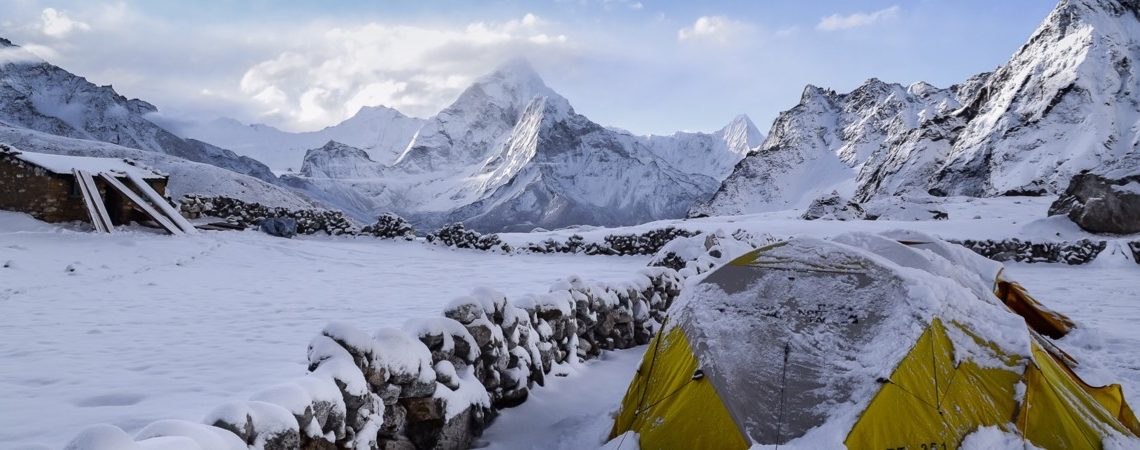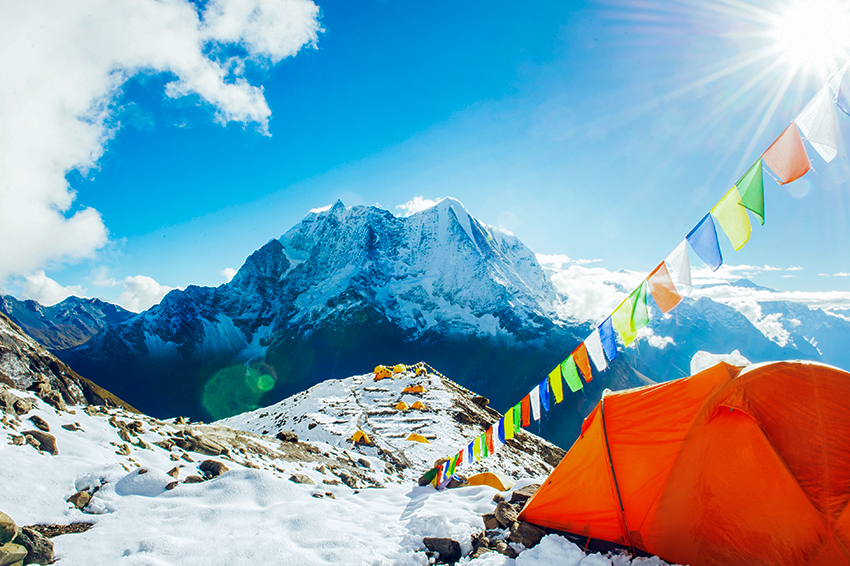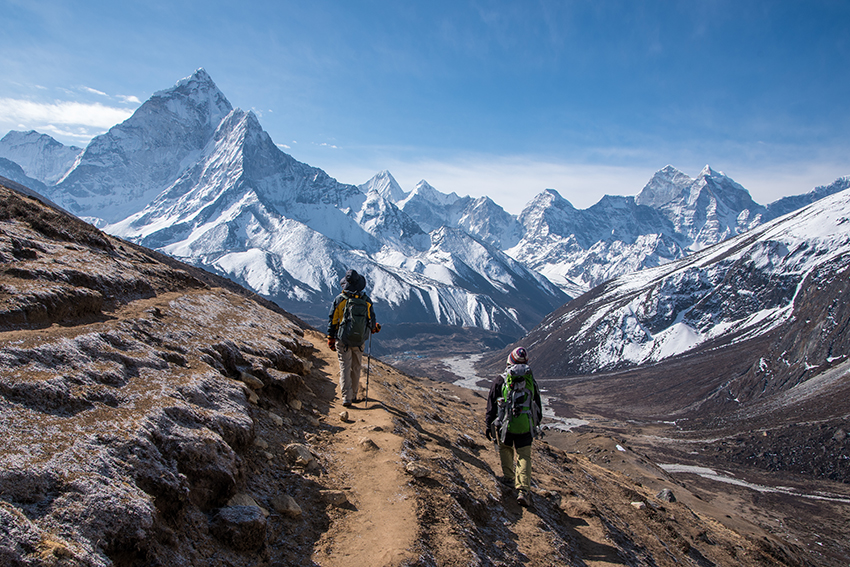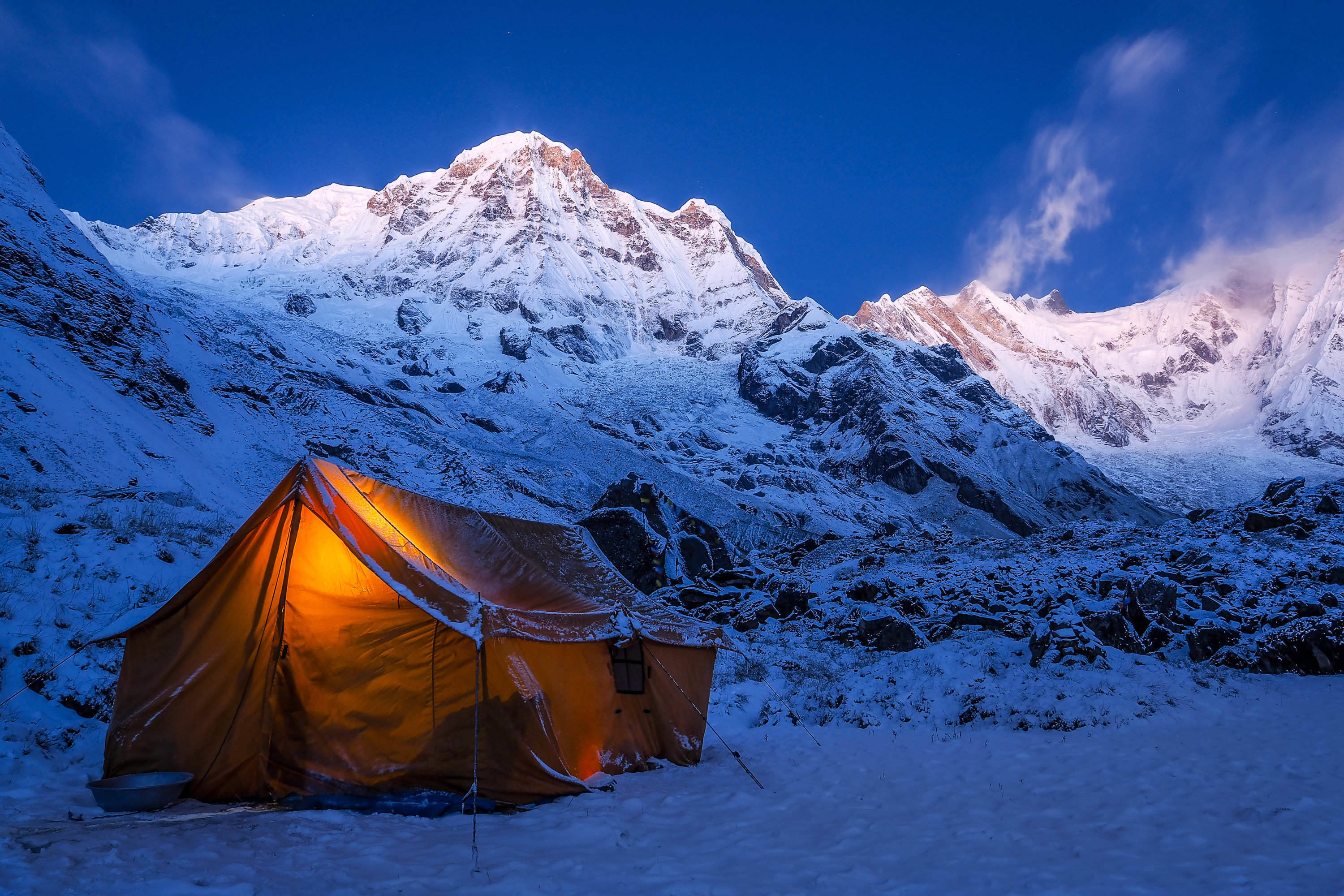Everest Base Camp or Annapurna Base Camp: Which one should you choose?

Lovenish Kalra
Lovenish rarely uses any social media so if you wish to chat with him about travel, riding and music etc. then you may reach out to him at lovenish.kalra@adventurenation.com
Latest posts by Lovenish Kalra (see all)
- Hot Air Balloon: Floating Over the Pink City, Jaipur - September 11, 2020
- Treks to Make your September Happening - June 29, 2020
- Best Himalayan Treks in January - June 11, 2020
Mountaineering has always been an integral part of the Nepalese tourism industry. The small Himalayan nation in the Indian Subcontinent has been hosting thousands of trekkers from all over the globe, over the last few decades. Eight of the fourteen Eight-Thousanders Mountains are located in the country and summiting these peaks obviously requires a certain level of skill set and a few years of mountaineering experience. For people who are not trained mountaineers but have the desire to see those majestic peaks, there are the base camp treks. Although all the base camp treks offer a unique trekking experience but the two most popular of them are the Annapurna Base Camp (ABC) Trek and the Everest Base Camp (EBC) Trek.
Annapurna is considered to be one of the most difficult peaks to summit in the entire world, and surely a trek to its base camp is also no mean feat. ABC is located at an altitude of 13,550ft and is a part of the Annapurna Sanctuary, nestled in the Annapurna Range of Himalayas. The sanctuary is inhabited by a mixed demographic of people following different beliefs such as Buddhism and Hinduism. In the lower regions, you will also find small communities of small farming communities of Brahmin and Chhetri people. The trek commences from Nayapul, located 40km northeast of Pokhara and is open almost throughout the year.
Standard Routing: Kathmandu-Pokhara-Nayapul-Ghandruk-Sinuwa-Deurali-ABC-Bamboo-Jhinu-Nayapul-Pokhara-Kathmandu
Must Read: Annapurna Base Camp Trek – A Backpacker’s Guide

Mount Everest, named after Sir George Everest, is the highest mountain on the planet and attracts hundreds of thousands of people from across the globe every year. Climbing on top of the world is obviously something only a handful of people manage to achieve but even trekking to its base camp is considered an accomplishment in itself. The southern base camp of Everest is located at an altitude of 17,598ft and is a part of the Sagarmatha National Park located in northeast Nepal. The Khumbu (Everest) region is home to the extra ordinary Sherpa people known for their endurance. The trek commences from the north-eastern town of Lukla and can be reached by taking an adventurous forty minute flight from Kathmandu.
Standard Routing: Kathmandu-Lukla-Phakding-Namche Bazaar-Tengboche-Dingboche-Lobuche-Gorak Shep-EBC-Gorak Shep- Kala Patthar-Panboche-Namche-Lukla-Kathmandu
Must Read: Lifesaver Tips: Planning Your Everest Base Camp(EBC) Trek

Which one to choose: ABC or EBC
As cliché as it may sound, these two treks should not be compared together. As a matter of fact, no two treks should be compared with each other. Still, a comparison, basis various important factors, is done below that might help someone who is contemplating to choose one of these two.
Accessibility and Season
| ABC | EBC |
|---|---|
| People travelling from outside of Nepal may take a connecting flight to Pokhara and then drive to Nayapul. One also has an option of driving from Kathmandu to Pokhara which generally takes around seven hours. Although the trek is doable throughout the year, the summers/monsoons are considered not ideal as the region receives a lot of rainfall and the trail becomes dangerous. Someone looking for a considerably challenging experience should travel during the winters. | Kathmandu, the capital city of Nepal, is the generally the point of origin from people coming from abroad. From Kathmandu, an early morning flight is to be taken to reach Lukla from where the trekking starts. There are primarily two season to do the trek: March to May and Sep to Nov. Although there are some trekkers who embark on this journey during the winters (Dec to Feb) as well, but they have to be prepared for some delays as sometimes a few high passes are closed due to heavy snow and bad weather. |
Acclimatization
| ABC | EBC |
|---|---|
| Getting acclimatized is probably one of the most important factors while trekking to a high altitude area. The acclimatization process is much easier on this trek as the trail offers a unique pattern of ascends and descends on the initial days of trekking, thus making it more comfortable for one to adjust. The average altitude gain per day on this trek is around 1500ft which is manageable and that’s why a rest/acclimatization day is not required. Overall, Acute Mountain Sickness (AMS) does not pose a major threat here. | Getting acclimatized in the Everest region is the most difficult part of the trek as there is a consistent gain in altitude throughout. Starting from an altitude gain of around 4500ft in a span of forty minutes during the Kathmandu-Lukla flight, the average altitude gain per day on this trek is rather substantial. That is why one needs to spend a couple of days as rest/acclimatization days to avoid getting hit by the Acute Mountain Sickness. Usually, these acclimatization days are spent in the popular villages of Namche Bazaar (11,290ft) and Dingboche (14,300ft). |
Terrain and Infrastructure
| ABC | EBC |
|---|---|
| Located in the lower regions of the Himalayas, the trek offers jaw dropping landscapes throughout the trek along with spectacular views of various peaks. Initially you hike along the Burungdi River and Modi River and then you enter the dense Rhododendron trail and Bamboo forests. The trail includes several staircases which are relatively steep but they lead to suspension bridges which makes it totally worth the effort. The trail from Deurali to the base camp is an avalanche prone area so you may have to cross the Modi River which could turn out to be time consuming.
The travel infrastructure on the trek is considerably decent with enough accommodation/food options available easily throughout. In case of medical emergencies, a helicopter evacuation facility is available so the correct adventure insurance must be taken if you want financial safety. |
The terrain and landscape is quite different on this trek. Initially, you climb along the Dudh Koshi River from Lukla to Phakding/Namche. There are relatively steep climbs to reach Namche and there are a few long suspension bridges as well which provide a fun adventure. After Namche, you hike into the Rhododendron trail and can spot some Himalayan wildlife including Musk deer and the Himalayan Thar. The higher region of Everest is cold and dry and there is not much greenery visible after crossing Tengboche. The trail is easy to walk on but you are almost always ascending.
Being a popular trek, the travel infrastructure is rather good. There are plenty of accommodation/food options available easily throughout. In case of medical emergencies, a helicopter evacuation facility is available so the correct adventure insurance must be taken if you want financial safety. |
Level of Difficulty
| ABC | EBC |
|---|---|
| ABC is considered to be a moderate trek. The trail is not treacherous and the average no. of trekking hours per day is around six to seven. The altitude gain per day is not substantial which makes it easy to acclimatize. Anyone from a novice trekker to someone, who has done a couple of easy to moderate Himalayan treks, can attempt this trek. First timers are advised to prepare for at least a couple of months and should avoid travelling in the winters to make it more comfortable for them. | EBC falls under the moderate to difficult category. The trail does not require any technical skill set but there are several steep climbs throughout the trek including a few staircases. A considerable amount of altitude gain every day and the lack of oxygen at high altitude areas make it more challenging. Ideally one should go on at least two moderate Himalayan treks before planning for EBC but there are plenty of first timers as well that have completed this trek. Although a three month preparation time is a must. |

Highlights
| Basis | ABC | EBC |
|---|---|---|
| Maximum Altitude | 4,130mt / 13,550ft | 5,643mt / 18,513ft |
| Origin | KTM/Pokhara | Kathmandu |
| Starting Point | Nayapul | Lukla |
| Grade | Moderate | Moderate to Difficult |
| Open Season | Mar-May / Sep-Nov | Mar-May / Sep-Nov |
| Duration ex KTM | 10N/11D | 13N/14D |
| On Trek Acco. | Tea houses | Tea houses |
| Food Availability on the trek | Available in tea houses | Available in tea houses |
| Permit required | Yes (ACAP & TIMS) | Yes (SCAP & TIMS) |
| Major Summits visible on the trek | Annapurna South (7279mt), Fang Annapurna I (8091mt) Ganagapurna (7485mt) Annapurna III (7855mt) | Mt Everest (8848mt) Mt Lhotse (8516mt) Mt Makalu (8485mt) Cho-Oyu (8,201mt) |

Every trail that you walk, will take you through a different pass, a distinct river crossing, a unique village, a contra distinct sunset viewpoint and an individual feeling of emotions. ABC offers you viridescent trails and hot water springs whereas EBC offers you the awfully adventurous Lukla flight and the centuries old monasteries. ABC presents a variety of unique cultures to learn and a prospect to catch a glimpse of one of the most difficult peaks to climb whereas EBC provides an opportunity to get acquainted with the remarkable Sherpas and gaze at the top of the world.

Ideally, a trekker should have both of these astounding experiences but if one has to choose one, it really comes down to the extreme basics. If you have around ten days time and are a little short on funds, go for ABC but if you can spare a couple of weeks and can afford to shell out a little more money, it should be EBC all the way.



